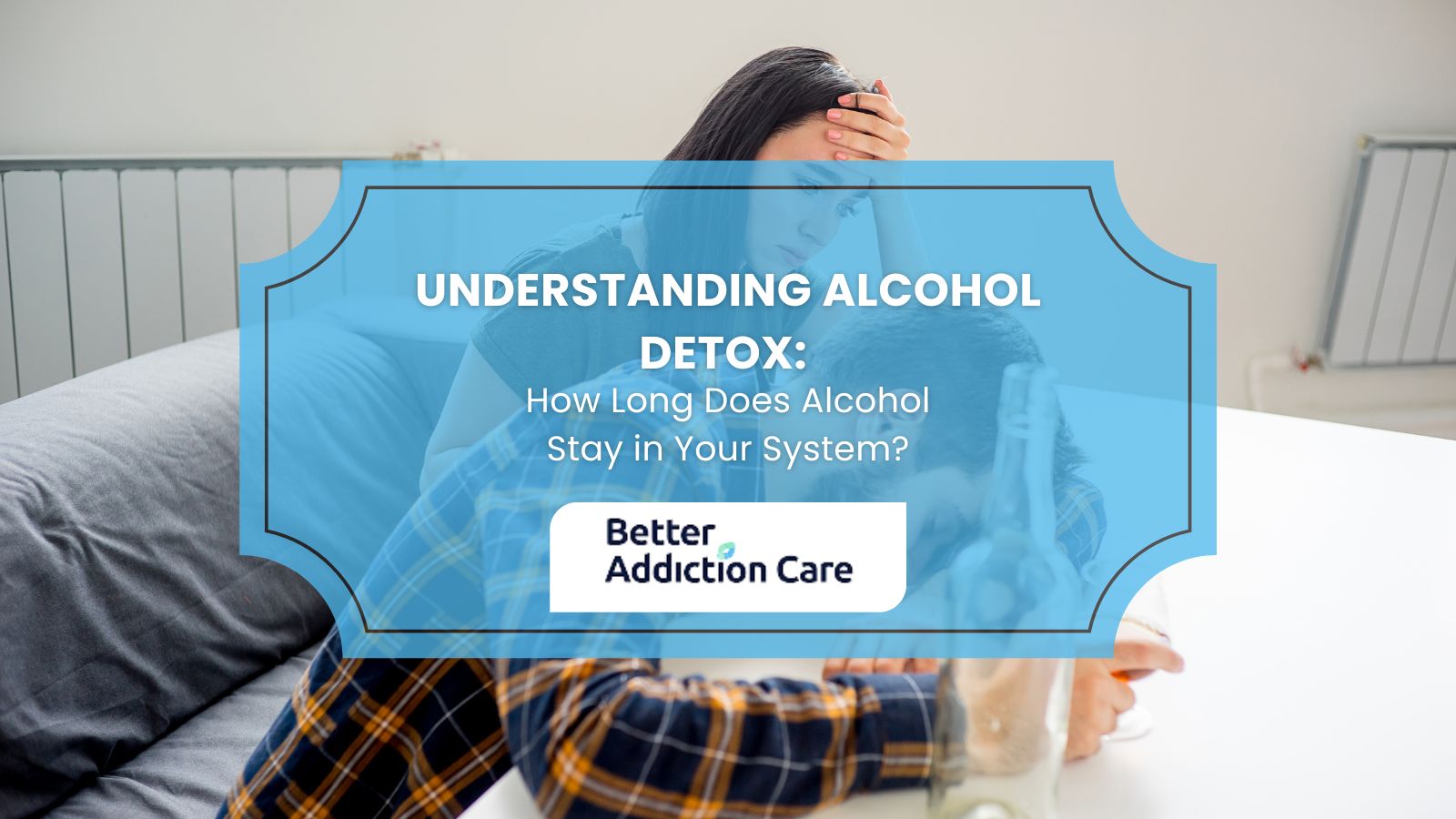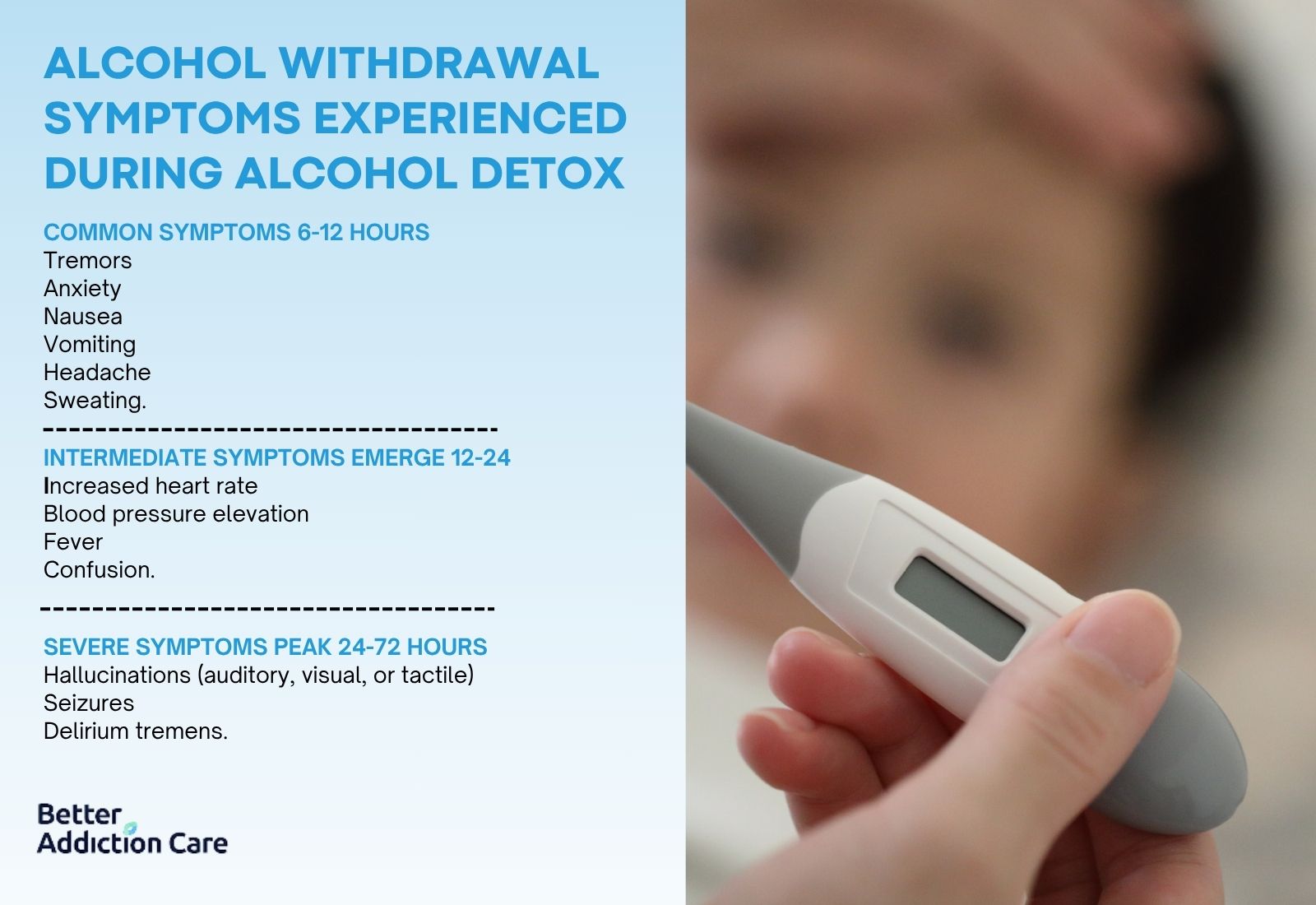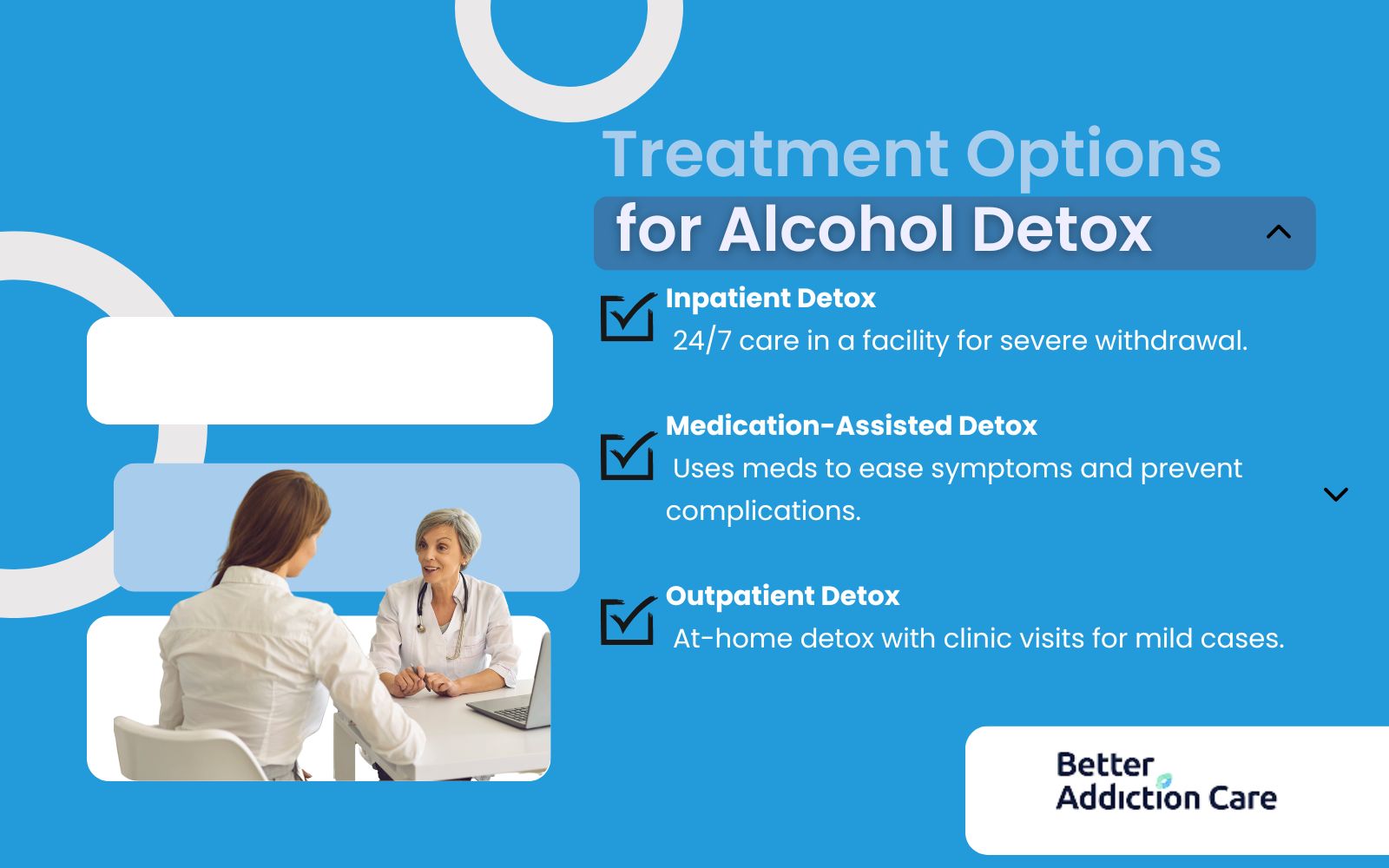Understanding Alcohol Detox: How Long Does Alcohol Stay in Your System?
Alcohol stays in your system for 6-12 hours in blood, 3-5 days in urine, 12-24 hours in breath, and up to 90 days in hair follicles, timeframes that matter significantly given that 28.9 million Americans ages 12 and older struggled with Alcohol Use Disorder in 2023.

These detection periods vary based on how much you consumed, the specific test used, and individual factors, with each method serving different purposes, from measuring current impairment to identifying longer-term alcohol use patterns.
Here are some approximate alcohol use detection times for different tests:
What Are The Factors That Influence How Long Alcohol Stays in the Body?
The factors that influence how long alcohol stays in the body include individual physiological characteristics, metabolic capacity, consumption patterns, and health status.
The table below provides detailed information about how each of these key factors affects alcohol processing and elimination.
What Is The Timeline for Alcohol Use Disorder Detox?
The timeline for alcohol use disorder detox follows a predictable pattern, with acute withdrawal symptoms subsiding within 5-7 days, though the complete process varies based on individual factors and addiction severity. The detox timeline begins within 6-12 hours after the last drink when early withdrawal symptoms appear.
The initial phase starts 6-12 hours after stopping alcohol consumption. Early symptoms include tremors, anxiety, nausea, and sweating. Symptoms typically peak within 24-72 hours, when more severe manifestations like hallucinations, increased heart rate, fever, and seizures occur. The most dangerous complication, delirium tremens (DTs), develops during this peak period and constitutes a medical emergency.
Most acute withdrawal symptoms resolve within 5-7 days, though some individuals experience prolonged symptoms. Post-acute withdrawal syndrome (PAWS) involves persistent symptoms like mood swings, fatigue, sleep disturbances, and cognitive impairment that last weeks to months.
What Effects Do Different BAC Levels Have on the Body?
Effects of BAC on the body range from mild relaxation at lower levels to severe impairment and potentially fatal consequences at higher concentrations. Key stages include initial euphoria, progressive coordination loss, dangerous confusion, and life-threatening nervous system depression.
The table below details specific BAC ranges and their corresponding physiological impacts.
How Long Does It Take to Feel Better After Quitting Alcohol?
Feeling better after quitting alcohol begins within 1-2 weeks for most people, though complete recovery takes longer. Acute withdrawal symptoms typically resolve within 5-7 days, marking the first improvement milestone.
Physical symptoms like nausea, tremors, and sweating usually disappear first. Sleep patterns begin normalizing within 1-2 weeks, though complete sleep restoration takes 1-3 months. Energy levels and mental clarity improve within 2-4 weeks as the body recovers from alcohol's effects.
Post-acute withdrawal syndrome (PAWS) affects long-term recovery, causing mood swings, fatigue, and cognitive issues for weeks to months. Most individuals report significant improvements in physical health, mental clarity, and quality of life within 1-3 months of maintaining sobriety.
Comprehensive treatment, including therapy and a support group, accelerates the recovery process and provides tools for maintaining long-term sobriety.
What Are The Factors That Affect the Alcohol Detox Timeline?
The factors that affect the alcohol detox timeline are the duration and intensity of alcohol use, including episodes of binge drinking or alcohol poisoning, which place added stress on the body and extend recovery time. Chronic consumption leads to stronger dependence and more severe withdrawal. Liver or kidney conditions slow the elimination process, while age, weight, and metabolic rate influence how efficiently alcohol is processed. Co-occurring mental health issues, poor nutrition, and use of other substances intensify symptoms. The quality of medical care and support during detox also plays a key role in the overall timeline.
What Are The Common Alcohol Withdrawal Symptoms Experienced During Alcohol Detox?

The common alcohol withdrawal symptoms include tremors, anxiety, nausea, vomiting, headache, and sweating. These develop within 6-12 hours and are generally manageable with proper medical support. Intermediate symptoms emerge 12-24 hours after stopping drinking and include increased heart rate, blood pressure elevation, fever, and confusion.
Severe symptoms peak 24-72 hours into detox and include hallucinations (auditory, visual, or tactile), seizures, and delirium tremens. Delirium tremens is a medical emergency characterized by severe confusion, disorientation, agitation, and potentially fatal cardiovascular collapse. This complication requires immediate medical intervention.
Medical detox programs provide medications and monitoring to manage these symptoms safely for those recovering from alcohol addiction, preventing complications while the body eliminates alcohol and begins healing.
What Are the Treatment Options in Alcohol Detox?

Treatment options in alcohol detox include inpatient detox with 24/7 medical monitoring, medication-assisted detox to manage withdrawal symptoms, and outpatient alcohol rehab for those with stable conditions who need flexible, structured support while living at home.
How To Find Help for Alcohol Use Disorder?
To find help for alcohol use disorder, begin by reaching out to a medical professional or visiting a specialized detox center where withdrawal is managed under medical supervision. Immediate assistance is available through national helplines dedicated to substance abuse and mental health support.
Healthcare providers and insurance companies offer referrals to appropriate treatment programs. Use our alcohol rehab locator at Better Addiction Care to quickly find trusted and personalized treatment options that meet your specific needs.





